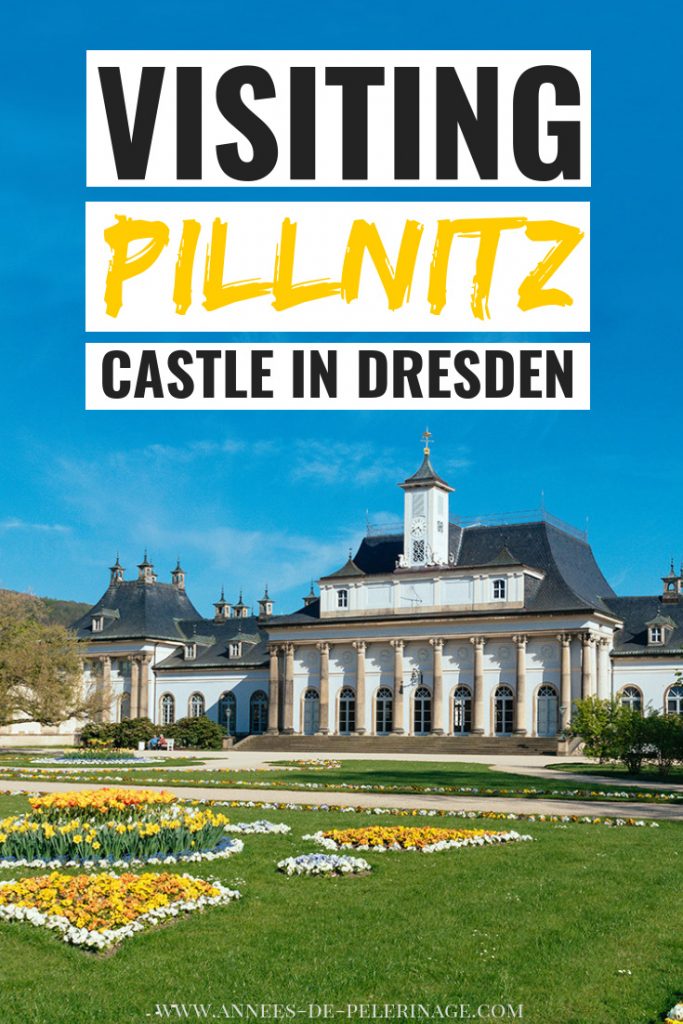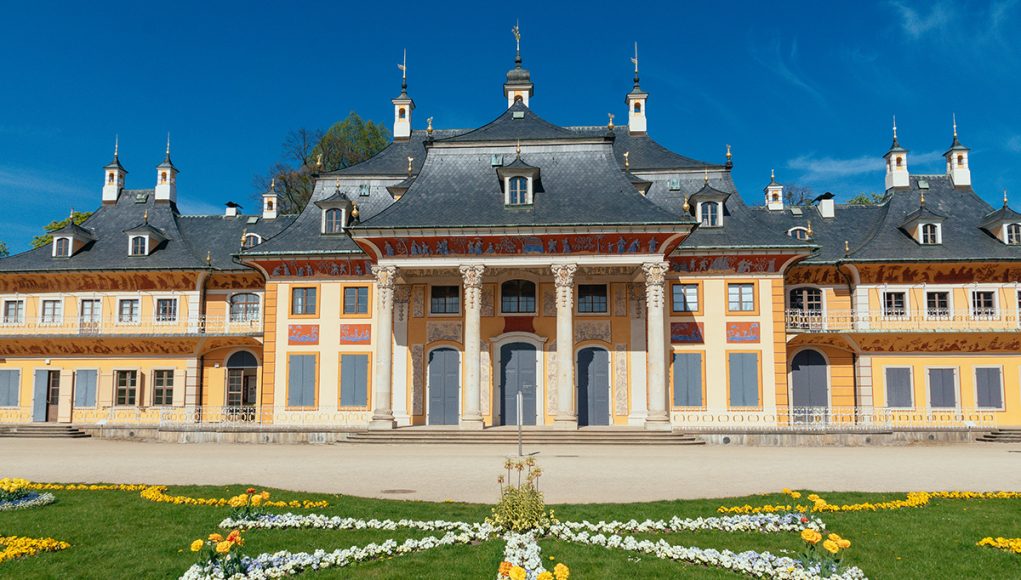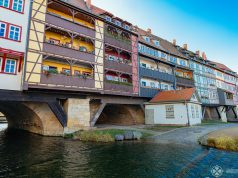How to get to Pillnitz castle from Dresden, what to see and how long it takes. Plan your perfect tour.
Pilnitz is a quaint little town on the banks of the River Elbe only 30 kilometers away from Dresden. Here, you find the lovely Pillnitz castle (“Schloss Pillnitz“) and its wonderful gardens. For me, it’s one of the best day trips from Dresden – especially as so few international tourists come to visit (just in case: check out my list of the other reasons to visit Dresden).
Note: I get a commission for purchases made through links in this blog post

But Pillnitz Castle is not only beautiful, but it also played an important role during the French Revolution, as it was here the so-called Pillnitz Declaration was signed, which ultimately lead to the French Revolution Wars. Quite the historic site, eh? Here is how to visit Pillnitz castle from Dresden.
Pro tip: Book a steamboat cruise to Pillnitz from Dresden. Here’s the link
The short history of the castle
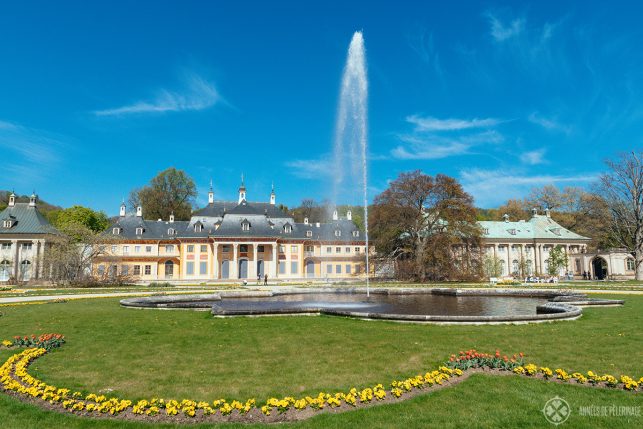
Pillnitz castle dates back to the 18th century. Elector August III., a grandchild of the famous August the Strong, started building the first Baroque buildings you may see today. Even before, there was a somewhat smaller castle that probably dates around 1400 AC.
From the start out Pillnitz was meant to be a summer and hunting palace for the king and his court. One of the royal pleasure barges that served as transport from Dresden for the aristocracy is still on display in the gardens today.
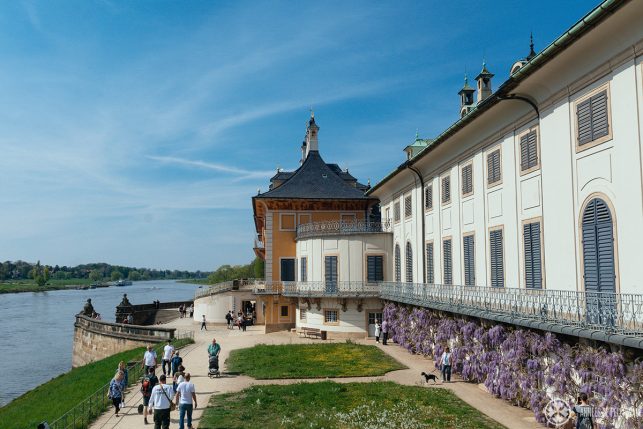
Pillnitz underwent three distinct building periods, which are clearly visible until today. August the Strong ordered the redesign of the Renaissance castle into a Baroque Palace between 1720 and 1730.
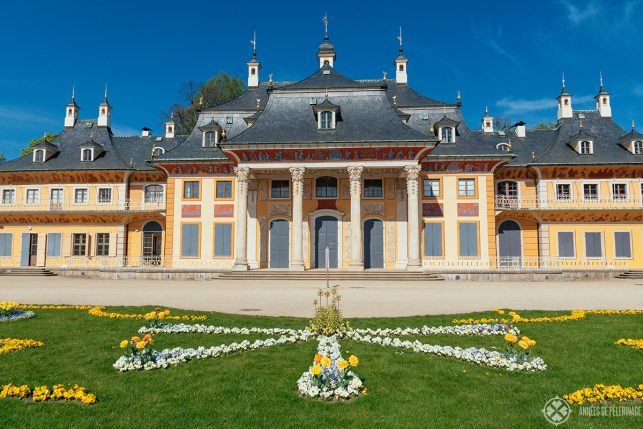
Chinese decors were very en vogue back then (August the strong had a huge Asian porcelain collection) and so you’ll find beautiful chinoiseries along the cornices of Pillnitz castle dating back to that period
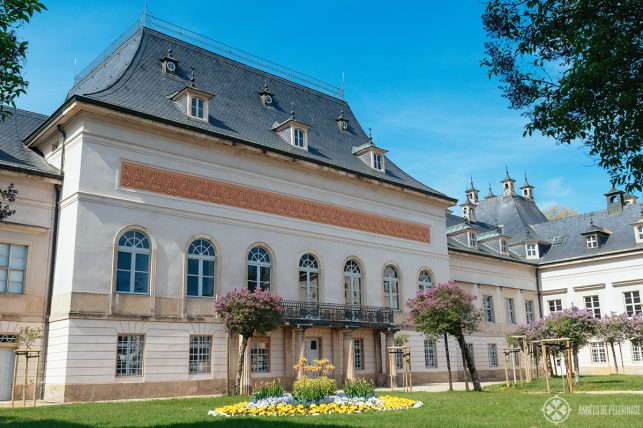
His great-grandchild, Elector Friedrich August III. ordered the construction of the Mountain- and Water Palais (Bergpalais & Wasserpalais). He also added the English and the Chinese Pagoda in the gardens of Pillnitz castle.
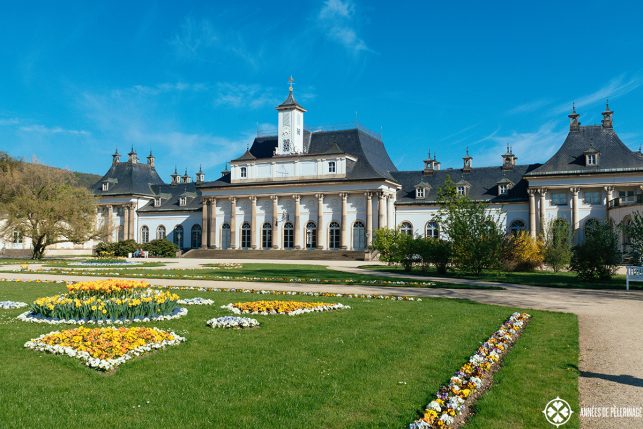
In 1818, after a fire devastated the main building, King Friedrich August I, ordered the neoclassical New Palais in the middle of Pillnitz castle. A kitchen, a brewery, and a large chapel were added a few years later as well. Ever since 1830, Pillnitz appears as you see it today.
The park of Pillnitz castle
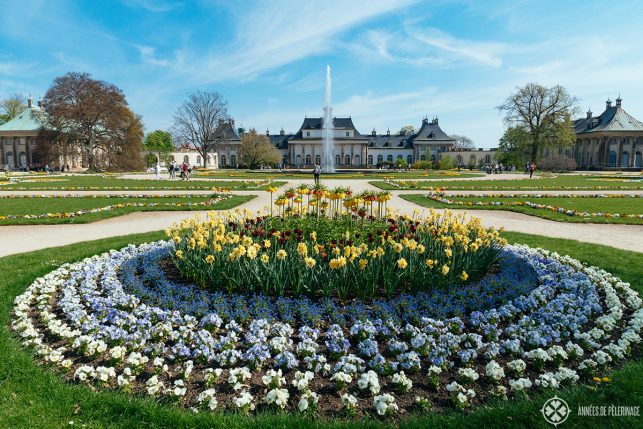
The main reason to visit Pillnitz castle is the fantastic baroque garden. Strolling through the verdant maze of hedges and flower-beds is a favorite pastime of locals and tourists alike.
The park is quite large, 28 hectares all in all, and home to many smaller and larger sights. You’ll even a botanical garden in the far back.
The Bosquet
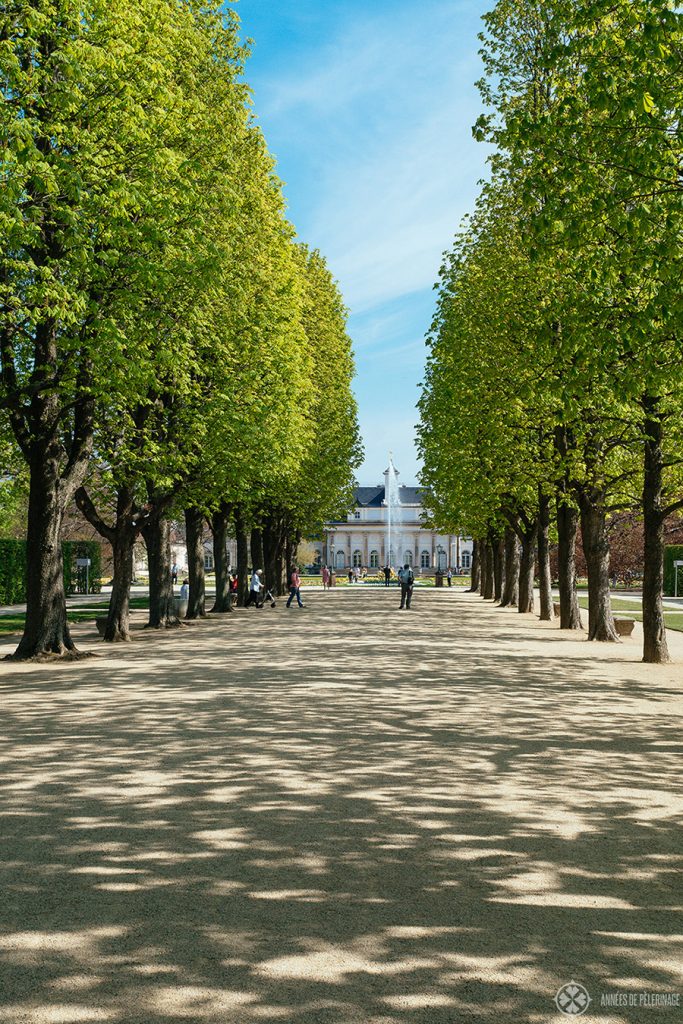
Pillnitz was, above all, a place for the Saxonian aristocracy to pursue games – an important element of baroque court life. The Bosquet, a formal French garden with high hedges or trees, was the place to engage in these royal past-times.
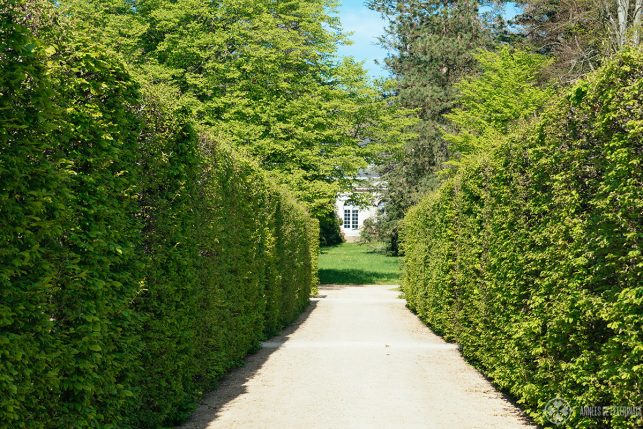
Back then, gigantic swings had been installed throughout these neat rows of shrubbery. A place for private trysts and certainly the only chance to catch a glimpse of what lay below the fashionable crinolines.
The 250 year old camellia
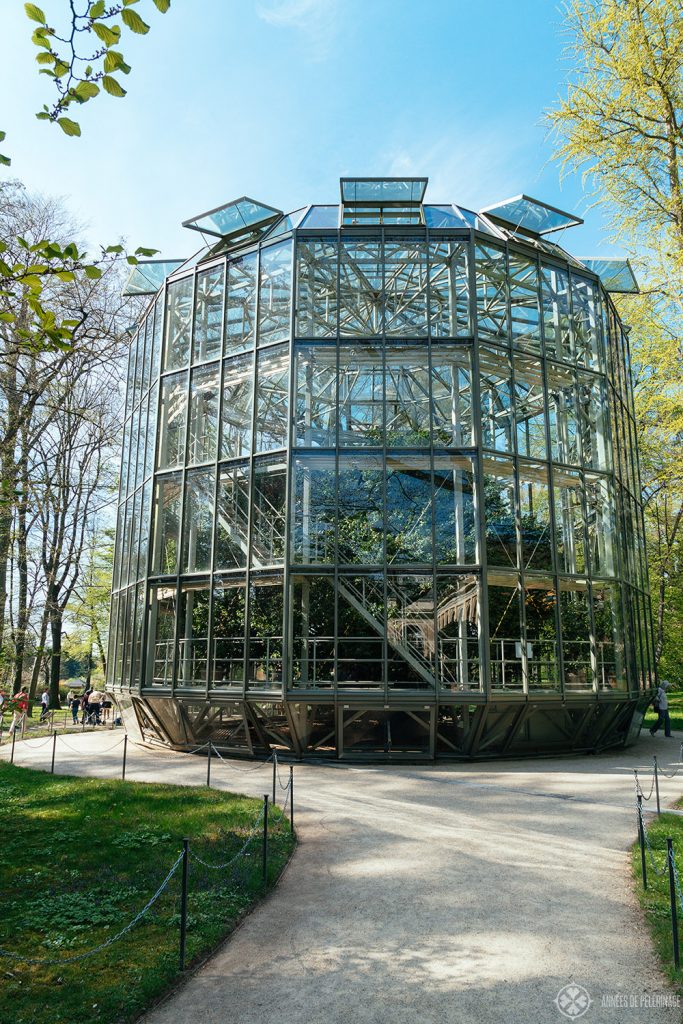
Among locals, the highlight is a 250-year-old Japanese Camellia. The Pillnitzer Kamelie has its own gigantic greenhouse and blooms between February and April. It is one of the oldest (maybe even the oldest) Japanese camellia in Europe and without a doubt the most impressive.
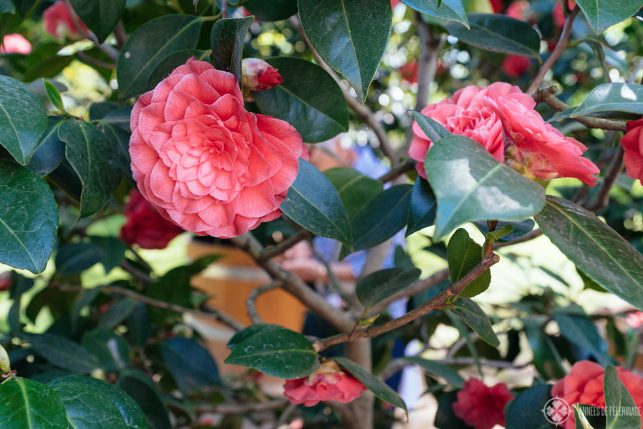
In summer, the greenhouse (54 tons heavy, no less!) is moved to the side, though you can enter the greenhouse for a small fee in the winter months. While some might think it’s only a pretty flowering tree, back in the 18th-century camellias were priced more than gold. Having exotic plants like these drew visitors from all over the country and added tremendously to the prestige of the owner.
The Chinese Pavilion
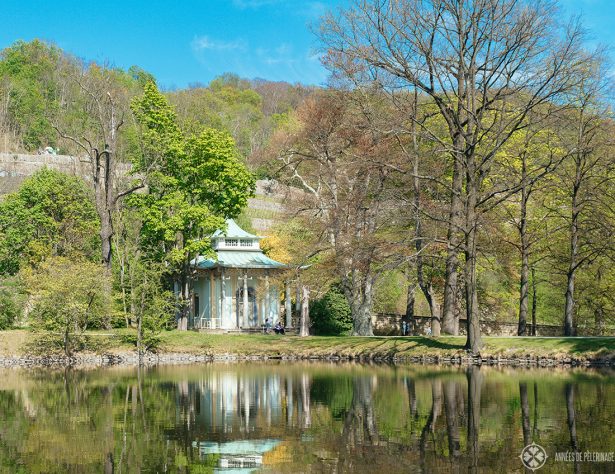
At the far end of the park, you will find the Chinese Pavillion. Unlike many others of its contemporaries, this one actually counts as the best replica of a closed Asian pavilion in Europe.
You cannot go inside, though you may catch a glimpse of the Chinese landscapes on the walls of the single room within through the windows on the side.
The English Pavilion
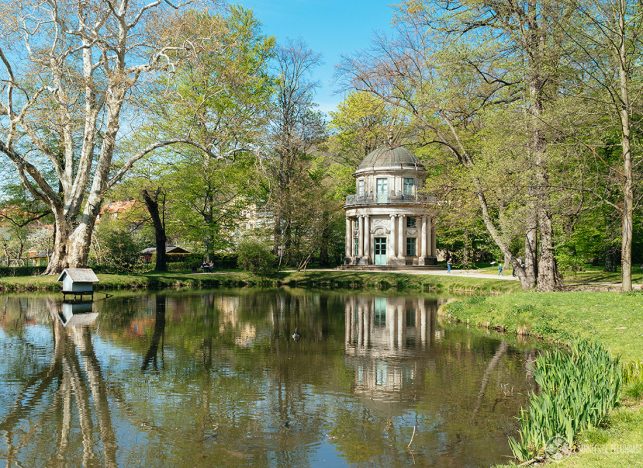
Not far away, you’ll see the English Pavillion by Johann Daniel Schade through the branches of the trees. Again, a little pond dominates the foreground, while the actual pavilion evokes the famous Tempietto di Bramante in Rome.
The Palm House
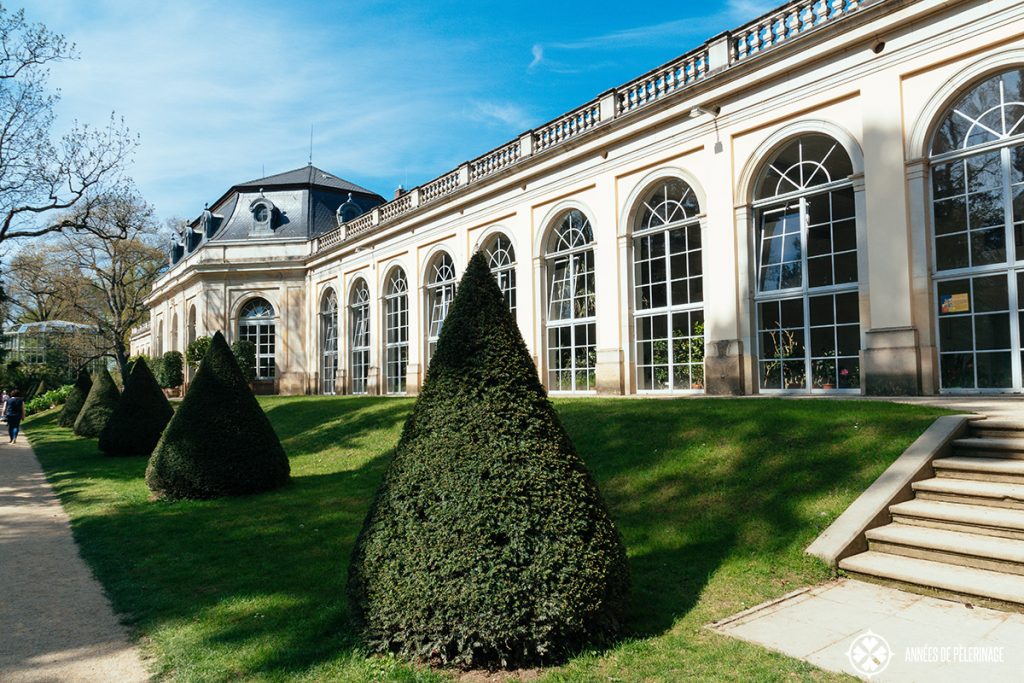
Back in the 18th century, if you wanted to show just how much money and power you had, then you decorated your gardens with palm- and orange trees. These rare southern plants only survived the winter in grand greenhouses, and Pillnitz has one of the largest in Germany.
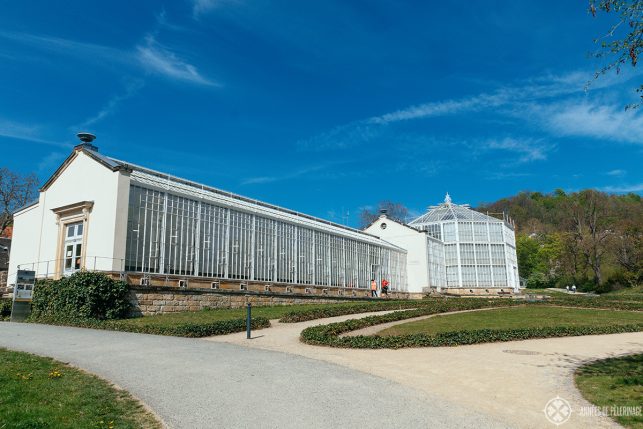
Right behind the actual palm house there is another greenhouse, is said to be the oldest surviving steel-glass greenhouse in Europe and was built in 1859.
Inside Pillnitz castle
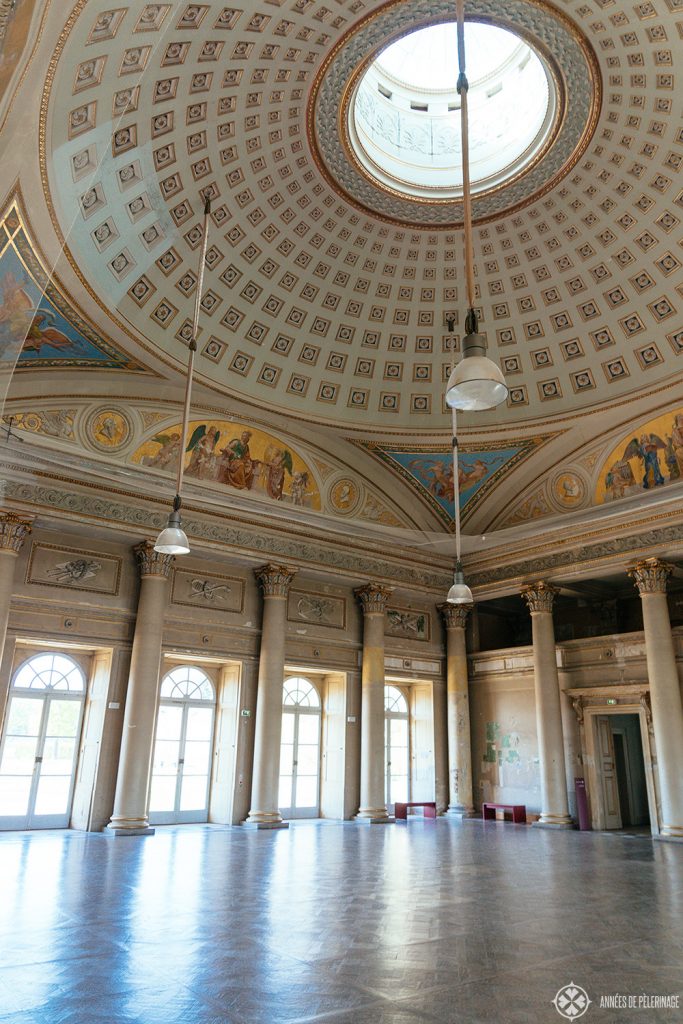
The good news: You can actually tour the palace as part of your 8 Euros day ticket for Pillnitz castle. That’s money well spent, as the exhibition inside is quite lovely.

I loved exploring the huge kitchen wing in the basement, as it gives you quite an intimate glimpse into everyday life at the Royal Saxonian court (and what an effort it took to maintain the high quality on the tables).
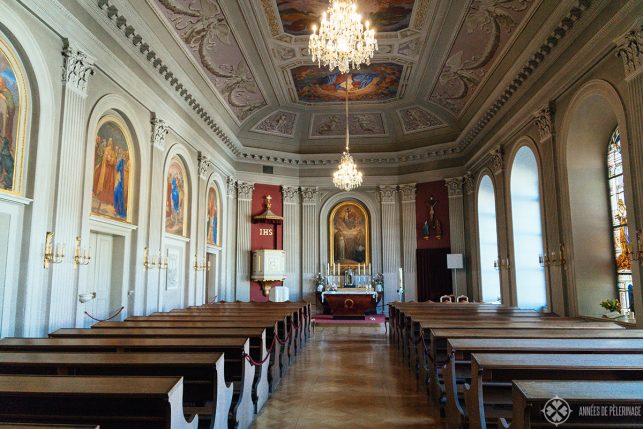
The rest of the palace is quite in ruins. Few of the rooms are renovated or restored to their former glory. But actually, I feel this adds to the experience. It’s somewhat more authentic that way. Definitely make sure to view the cute little chapel at the end of the castle tour.
The Vineyard Church
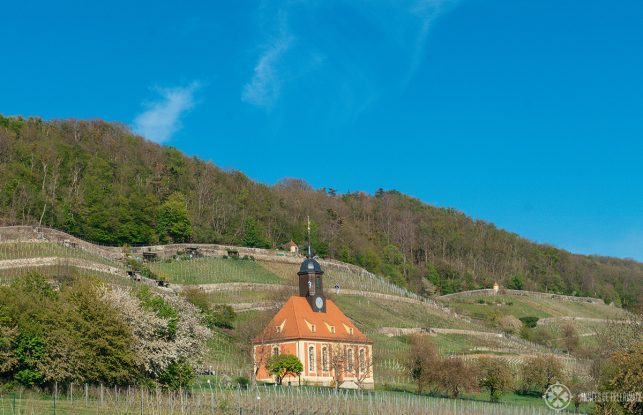
The surroundings of Pillnitz Castle are quite spectacular as well. Pillnitz marks the start of the Saxonian wine route and you should definitely drop at the picturesque Vineyard Church only 500 meters away from the park.
The views along the valley of the river Elbe are fantastic – as are the many little vineyards lining the hillside.
How to get to Pillnitz from Dresden
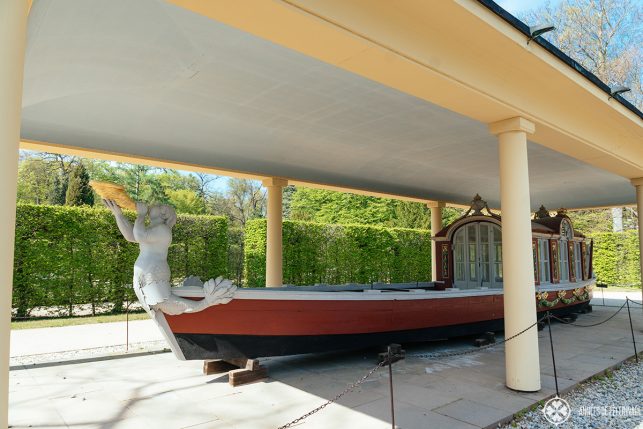
Germany has an excellent public transport system, but tiny small towns like Pillnitz don’t benefit from it. But it’s still fairly easy to reach. Here are your choices to get from Dresden to Pillnitz castle:
By bus
There is no regular direct bus from the central station or Postplatz to Pillnitz. You can, however, take one of the tourist buses. There is one that leaves every day at 2 pm from Postplatz, and it will be fairly cheap and usually, a guided tour is offered for free. In my opinion, it’s the easiest and fastest way to visit, as this bus does not stop along the way
Cost: 12 Euros
By boat
Embarking on one of the many historic steamboats is a must-do in Dresden. You can actually combine it with visiting Pilnitz castle. In the main season, there are three boats per day going to Pillnitz. Please be aware that the boats travel quite slowly upriver. Check out the schedule on the official website.
If you like it cheaper, then book it via GetYourGuide. Here’s the tour (17 Euros)
Cost: 24 Euros
By taxi
It’s only 15 kilometers from Dresden to Pillnitz. A taxi still remains a viable option, if you want to stay independent. Please be aware, that you will have to install the mytaxi app (like uber, just with trained drivers) to order your taxi for the way back. Financially speaking, it’s only viable in groups of 4 or larger.
Cost: about 50 Euros
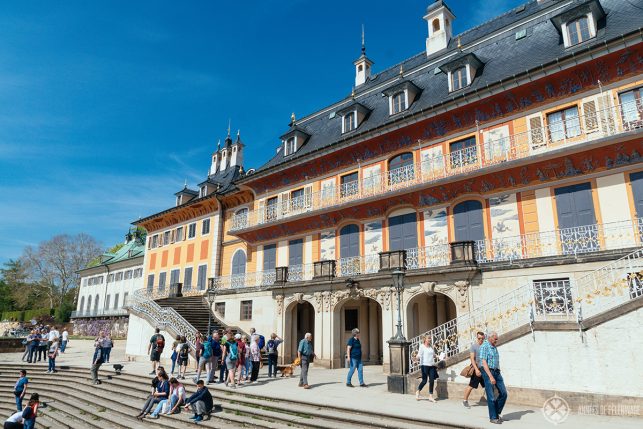
By tram / train
You can also take the tram line 2 to get to the Kleinzschawchwitz ferry terminal and then take the ferry across to Pillnitz. As an alternative, you can also take the tram #1 and continue with the bus 63 from Karcheralle to Pillnitz
The smart thing about taking the train is: You can get a tourist day ticket that you can use for the rest of your day a well. I do need to warn you, though, that navigating the public transport system in Dresden is not all that easy.
Definitely, use the free website of the Dresden public transport system (DVB) to plan your day trips.
Cost: 6 Euros
Pillnitz Castle tickets and entrance fee
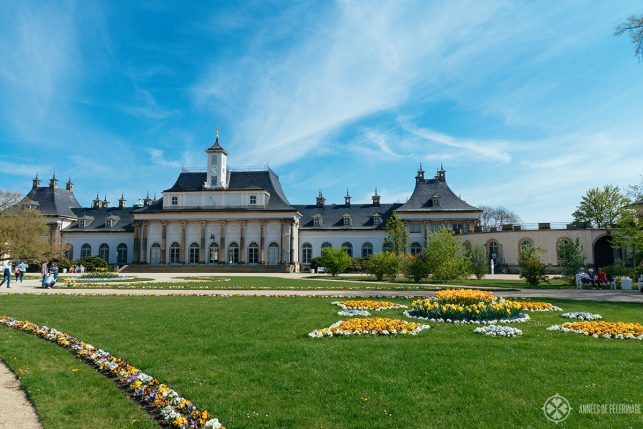
Tickets are sold in the old guard house in front of the castle. I advise you to get the day ticket for the park and the castle. Here are the Pillnitz ticket prices:
- Adults: 8 Euros
- Groups of 10 or more: 7 Euros p.p.
- students & disabled: 6 Euros
- Children 16 or younger: free
The entrance fee for Pillnitz park alone is 3 Euros.
Pillnitz Castle opening hours
Pillnitz is open Tuesday till Sunday from 10 am until 8 am.
Important: The museums in Pillnitz are closed between November and March
So, this was my guide to Pillnitz castle and how to get there from Dresden. Got any questions? Leave them in the comments below
